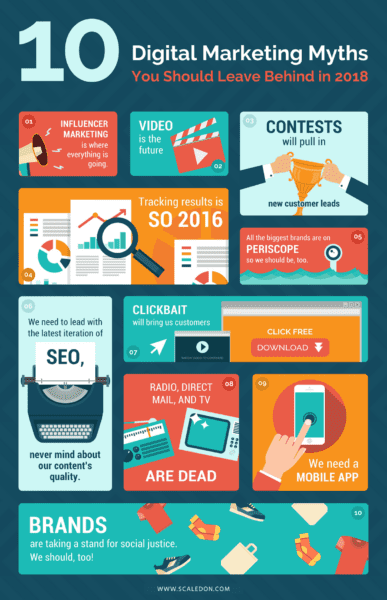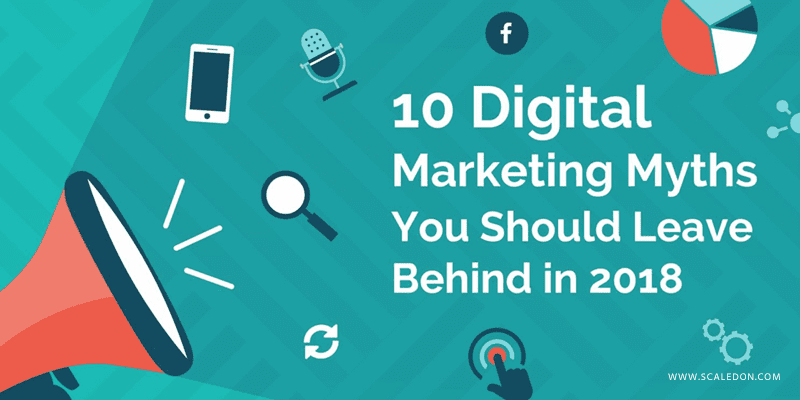We moved from talking “at” potential customers through TV commercials, billboards, and newspaper ads to engaging in open dialogue “with” customers. In doing so, we changed people’s expectations for their buying experience. We flipped the funnel. We flattened. We disrupted.
But did we lose common sense in the process? Has enhanced technology distracted us (and our clients) with shiny baubles so that we’ve forgotten about solid marketing principles?
During the California Gold Rush in the 1850s, people thought they’d made their millions when they unearthed Fool’s Gold, only to discover it was glittering but worthless. The folks who struck it rich were the tailors who made and sold blue jeans (think Levi’s) to miners.
It’s easy to chase those glittering new ideas especially when the fundamentals of digital marketing start to seem stodgy. But there’s no faster way to watch your marketing dollars circle the drain than pouring them into untested strategies that lie outside your brand’s experience.

Here are 10 digital marketing myths to leave behind in 2018:
- Myth #1 – Influencer marketing is where everything is going. Digital agencies are seeing a lot of kerfuffle over this one in 2018. It can be a big winner when the right influencer meets the right brand at the right time. Often, however, it’s a money pit. Influencer marketing can pull a lot of likes, shares, and engagements that never translate into sales. It works but It’s also more expensive on a CPM basis as the Nielsen Study shows (16 CPM for display ads vs $285 per 1000 influencer driven views). Plus, influencers can wreck a brand as easily as boost it. Think PewDiePie going out for Disney and then posting anti-Semitic videos days later. Or Scott Disick who copy/pasted BOOTEA’s caption and photo…right along with their detailed instructions to him…on Instagram. And don’t forget about the lawsuits the FTC is slapping unwary brands with. Yes, influencer marketing works (10% sales lift), but it carries equally high risks if not actively managed. There are other digital marketing tactics with more consistent ROI so we advise, wait on this strategy.
- Myth #2 – Video is the future. Video is a major content channel, YouTube is the second largest search engine after Google, and video accounts for 69% of all consumer traffic. It’s especially potent when married to email marketing. But the rush to video has led time-conscious marketers to churn out convoluted, copycat stories that aren’t well SEO optimized. If you are going to do video, you need to do it well. #1 Make an ongoing commitment to develop video content. #2 Track it via Google Analytics as for most brands it works best to drive your top of funnel exposure to new customers. #3 Make sure you have clear Calls to Action during and at the end of the video.
- Myth #3 – Contests will pull in new customer leads. Only if you know how to run them. Contests aren’t new in 2018, but they’re the first place many people turn when they see attrition eating away at the email list. Contests aren’t a set-it-and-forget deal. They have to be well planned, properly executed, and closely nurtured. Consider the Esurance debacle of 2017. The discount insurance behemoth offered a $1.5 million prize. The campaign initially looked like a success with 2.39 million people entering the drawing. When the contest was over, however, those new followers left as quickly as they came. Esurance had no funnel to drop their new names into customers, and the company did little more than enhance their already-massive brand awareness. So, connect the dots from customer acquisition > converted customer/lead. This typically takes a few tests to get right so start small and expand as your metrics prove out the ROI.
- Myth #4 – Tracking results is so 2016. Go with what you feel is right. It’s an old stereotype that feelings matter more than data, that too many marketers are believing. When creating content and campaigns feelings are more important than data that your testing returns. But when deciding on a digital marketing strategy or tactic, be ruthless. Data is more valuable than dollars. Collect it. Analyze it. Use it. Nothing drains your marketing budget faster than a tactic you can’t track.
- Myth #5 – All the biggest brands are on Periscope so we should be, too. A small or mid-size brand can only manage a few channels. You need a blog and a Facebook page. Depending on your customer profile, your brand might benefit from a presence on YouTube, Instagram, Twitter, LinkedIn, or Pinterest. But you can’t ask your customers to join a specialized platform they know little about just so they can follow you on it. Neither can your team manage a myriad of social media accounts. FOCUS. Pick one or two. The thinner you spread yourself, the shallower your quality and the fewer people who will follow you.
- Myth #6 – We need to lead with the latest iteration of SEO, never mind about our content’s quality. SEO brings you visitors, but content marketing converts them. That’s why quality content always comes first, adjust your SEO strategy accordingly. Don’t worry about tracking Google’s every twitch. Instead, produce pages filled with great ideas and solid research that engage your audience. Enhance them with imagery and video where appropriate. Be patient, and you’ll get great SEO results and see improvements in your search rankings. There’s no point in ranking high for thin content that does not convert..
- Myth #7 – Clickbait will bring us customers. Clickbait is common, and it does what it claims: it baits us into clicking. It’s also manipulative, dramatic, and often false and on the long run, it will negatively impact your search engine rankings. Exaggeration is a great way to lose your audience’s trust and gain a high bounce rate. Your customers will be expecting high-quality content or products and they if you disappoint them they won’t come back. Never mislead your customers or potential customers. They won’t forgive you.
- Myth #8 – Radio, direct mail, and TV are dead. It’s true that internet marketing is outstripping traditional channels. It’s also true that traditional advertising is still very much alive, and often, it’s thriving. Why? It often has a lower CPM with a higher conversion rate. Integrating your social media, email, and Google ads with your, radio ad or TV spot can be a great idea. You don’t have to toss out a proven strategy just because it is not HOT today.
- Myth #9 – We need a mobile app. The majority of US consumers download zero apps, and most people who do use apps stick to five or fewer of their favorites. For younger Millennials – the biggest app users – those five are Amazon, Gmail, Facebook, FB Messenger, and YouTube. Your ecommerce brand can’t compete with those. Plus, Millennials will delete apps with logos they don’t like or any bugs. For most brands, we would rather see that budget spent on engaging content and low (sub $5) CPM media. Focus on ranking better in search results and establishing an effective SEO strategy rather than investing in the multiple updates your app will need over time. Search engine optimization may take a while to show results but when it does it will bring you a higher return on investment than a mobile app.
- Myth #10 – Brands are taking a stand for social justice. We should, too! Blending giveback with commerce is a brilliant strategy, and Millennials, in particular, respond to it. Take caution, though. For every TOMS, Warby Parker, and Everyman that’s earned serious credibility through giving, there’s a Pepsi, Nivea, or Cracker Barrel that got into hot water by taking a political stand. An estimated 67% of people who stop using a brand following a controversy never return to that brand. Politics is polarizing, so before you wade into the issues, be ready for the backlash. In most cases, it’s not worth it. Your customers want you to give them a great product, anyway, not a chance to read yet another moral essay on social ills.
No matter what revolutionary new technology or idea has grabbed the gurus’ imagination, the fundamentals of digital marketing still produce the best results. Stick with #1 email campaigns, #2 SEO, #3 Google shopping/adwords, #4 Facebook,#5 retargeting, #6 video and #7 display advertising. Forget the expensive cool stuff and buy low CPM media where you can test and learn weekly at scale.
Focus on the user experience of your customers and improving your organic traffic. SEO works, that’s why everyone is doing it. So start on link building to help your website rank higher in SERPs. But at the same time don’t forget that quality content is a very important ranking factor so include your keywords in articles and blog posts that would be valuable for your audience. There are a lot of common SEO myths and marketing myths out there you should leave behind
In digital marketing, anything that isn’t clear, simple, and easy to execute will fail in the long run. It’s fun to play with novel technology, but most gizmos and gimmicks eat up time, leaving your marketing team buried in the new and wondering did that deliver any ROI? Unless you’re a major international brand, abandon the quest to keep up with Silicon Valley. Talk to your customers like the real people they are. They’ll love you for it.

